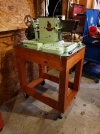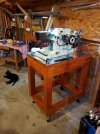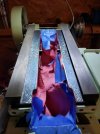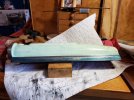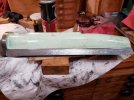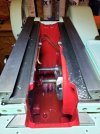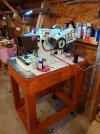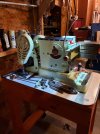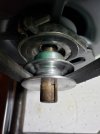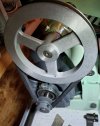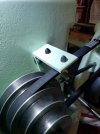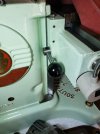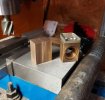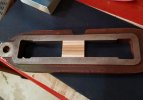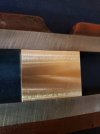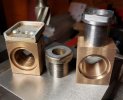Got the belts put on and checked for fit tonight, then discovered that the locking lever for the adjustable pulley system interfered with the motor cable coming out the back of the junction box due to my use of cable glands. So I unwired the box, took it off, flipped it around the other way, fished all the wires and glands back through, resealed the box mounting screws into the case with ptex 2A, and hooked up all the wires again so the power cord comes in from the front bottom instead of top rear and the motor cord comes out the bottom rear. Then I wired up the motor for low range, put the motor belt on, adjusted the motor, loosened and aligned the motor pulley, put on the belt guard, and fired it up.
It runs backwards. For the love of GAWD, the bumblefluckery.
It has run backwards since it was installed judging by the lay of the directional wires (hooked up by the motor manufacturer) and it had some green overspray on it so that has been a long, long time, long before Keith got it. I wondered how so many chips could have run through and chewed up the gear teeth since the proper direction of rotation means a chip would have to come in from the bottom straight up to get run through the gears. But if the gears run backwards it creates a funnel lined up in the path of any errant chip flying into the big opening at the front of the column. I also wondered why so much pressure wear and galling existed on the return side of the arm that moves the ram; now I know that it was working under its heaviest load at the point of least mechanical advantage so surface stresses were high. Remember, shapers have a mechanism which returns the ram about 60% faster than the work stroke, and if run backwards it runs forward fast and returns slow, not good for the mechanisms nor production speed.
Anyway, I reversed the motor wires which control direction and we should be good now. I still have to figure out why the pulley on the tower input shaft is a quarter inch out of alignment with the jack shaft pulley, must have something to do with why the locking collar/spacer that's supposed to be between the pulley and hand wheel is missing...I think it was removed so the pulley could be stepped over and aligned and silly me aligned the pulley so the set screws bit on the two machined flats that were obviously there for the purpose. Hopefully I'm nearing the end of repairing Stupid.
Oh, no, not quite, still have to whittle a round bar of 660 bronze into a rectangular sliding block and make a 4140 bushing to fit it. The chipped and ragged gears, I think, will live.

